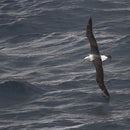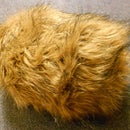Introduction: MacGyver Glasses
You're in class. It's a huge lecture hall for like a billion people and you got a seat near the back. But wait! You're nearsighted and you forgot your glasses!
[gasp] [dramatic music]
It's okay, though, because you have a piece of paper and a pencil.
P.S.
In the spirit of the Jury-Rig It contest, I'm going to make this instructable entirely in my lecture hall. I'm such a good student. For my studiousness, you should vote for me, wink wink.
Step 1: The Plan
Lenses are great and all, but they can only focus on objects at a specific distance—objects in the so-called "focal plane". But there's a range where things are still reasonably in focus. The size of the acceptably-focused region is called the depth of field. Now, I don't study optics and the factors that affect the depth of field are beyond my motivation to look up, but it's okay because we aren't going to use a lens.
There is another way to create an image, though. Instead of gathering the light with a lens, you block all the light that isn't going the right direction with a pinhole. The simplest cameras were just a light-proof box with a pinhole in it to project an image onto the film at the back of the box. They're really cool and I'd make one if I had photographic film. Alas, I don't.
Ideal pinholes have infinite depth of field. Since they don't depend on the focusing properties of a lens, all distances are in focus. They do decrease the field of view and make the image rather dim, but we care about the depth of field part.
Real pinholes have a non-zero diameter, so there are some limits to their depth of field, but in general, the smaller the aperture, the larger the depth of field.
In order to see the board from the back of our lecture hall, we're going to put a pinhole in front of both of our eyes. This will increase our depth of field enough to focus on the board (and everything else).
[Images from Wikipedia:
http://en.wikipedia.org/wiki/File:Lens1.svg
http://en.wikipedia.org/wiki/File:Pinhole-camera.svg ]
Step 2: What You Need
Paper: I used a sheet of 8.5" x 11" printer paper, but anything will do. I've had similar success with lined notebook paper.
Mechanical pencil: something pointy that also makes things black. I had .5mm lead, so my pinholes were 5mm in diameter. Smaller pinholes will have better depth of field, but a dimmer image.
Step 3: The Paper
Crease and tear a strip of paper about 2" or 5cm wide.
Step 4: The Pencil: Part the First
Make two dark areas at the width of your eyes. These make the paper more opaque and help you see the dim image against the otherwise bright paper.
Or maybe you have black paper in which case you can just skip this step.
Step 5: The Pencil: Part the Second
This is the part where you have to be pretty accurate. You want to punch two pinholes in the paper so you can look through each one with each eye.
I punched one and then held the paper up to my eyes. I looked through the one I punched first and put my finger where my other eye would be looking. I then punched the second hole where the tip of my finger was.
Make sure your pinholes are round. Carefully fold any little hanging bits to the back side.
Step 6: How to Use Them
Look through them. Be amazed at your ability to see things that are far away and very close all in focus.
If you didn't line up the pinholes exactly with your eyes, you might have to go back and redo it. Alternatively, you could tear them apart and tape them together a bit wider or narrower as needed.
If you get the stereotypical binocular view with two slightly intersecting circles of the image, your pinholes are almost perfectly aligned, but not quite. You might find that it's good enough or you can fold or tape the pinholes closer or farther so there is just one circle image to get better results.
And that's it. Enjoy your newfound depth of field.

Participated in the
Jury Rig It! Contest













